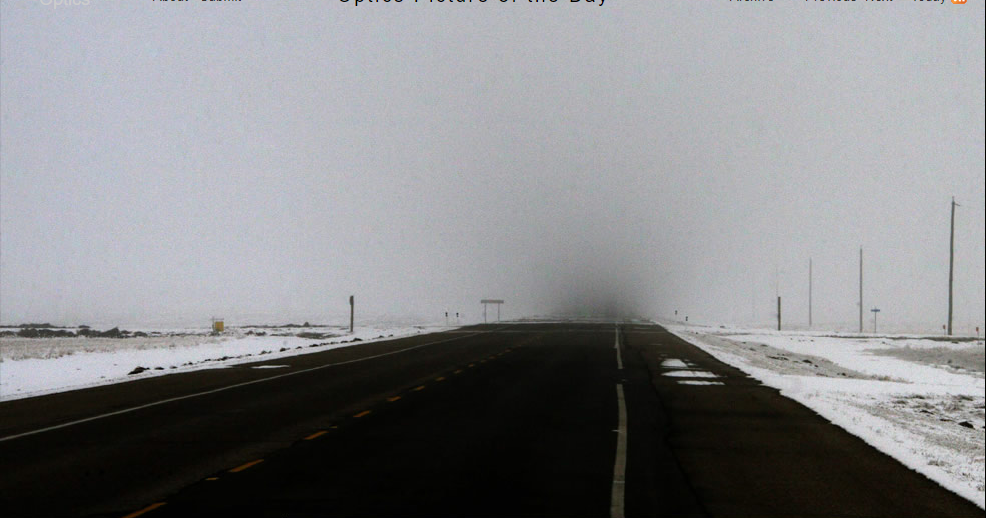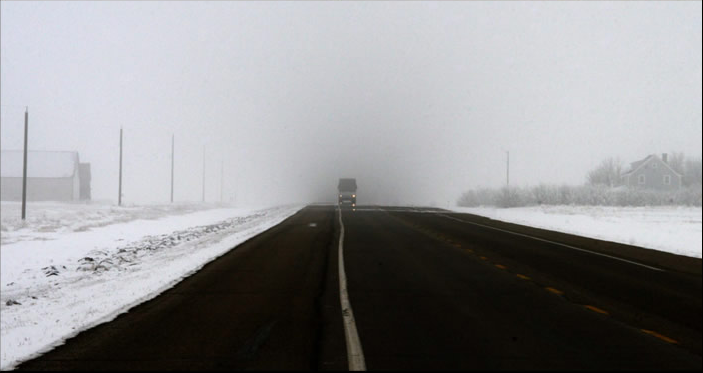Road Blink
Road Blink: A Fascinating Atmospheric Phenomenon
Have you ever experienced the peculiar visual effect known as "road blink"? If not, let me take you on a journey through this intriguing atmospheric optics phenomenon. Road blink occurs when driving on a dark road through light fog, particularly in winter conditions. The foggy sky above the road appears darker than the surrounding areas, creating an illusion of a dark tunnel. This mesmerizing effect has been observed in various locations, including Southern Alberta, Canada. In this article, we will delve into the science behind road blink and explore its captivating characteristics.
The Reflection and Mapping of Light and Dark
One theory suggests that road blink is akin to the "blink" phenomenon observed in arctic regions, where breaks in ice can be detected. In the case of road blink, patterns of light (snow) and dark (water leads) on the road are reflected onto the cloudy sky above. This creates a visual map of contrasting shades, allowing drivers to perceive the road ahead in a unique way. This optical illusion can be both fascinating and disconcerting, as it gives the impression of driving into a dark tunnel.
Mirage Effects and Snow Patterns
In addition to the reflection of light and dark, road blink images may also exhibit mirage effects. Mirages are optical illusions caused by the bending of light rays due to atmospheric conditions. The presence of snow on the road, possibly from recent light snowfall, combined with the design of roads in certain regions, can contribute to the occurrence of mirages. The shallow ditches on either side of the road enable the reflection of light from the sun, which heats up the dark road surface. These mirage effects can further enhance the intensity of road blink.
Winter Wonderland in Southern Alberta
Southern Alberta, known for its harsh winter conditions, is a region where road blink is relatively common. The images captured in this area showcase the stunning interplay between fog, snow, and the road. The lines of snow across the road are likely created by vehicles or snowmobiles crossing the road, especially near intersections or opposite farm buildings. These distinctive narrow trails add to the visual complexity of the scene and contribute to the overall mesmerizing effect of road blink.
Atmospheric Conditions and Timing
To better understand the occurrence of road blink, it is essential to consider the atmospheric conditions and timing. Road blink is more likely to be observed during winter, when fog and light snowfall are prevalent. The relatively high position of the sun in late February provides enough heating to the dark road surface, influencing the optical effects. The images discussed in this article were captured in the early afternoon, approximately one hour after the highest sun angle for that longitude. These specific conditions contribute to the intensity and visual impact of road blink.
A Psychological Illusion
Beyond its scientific aspects, road blink can have a psychological impact on drivers. The illusion of driving through a tunnel created by the darkened sky above the road can be disconcerting. The mind plays tricks as it tries to make sense of this unique visual experience. The combination of fog, mirage effects, and the reflection of light and dark creates a captivating ambiance that leaves a lasting impression on those who witness it.
In Conclusion
Road blink is an extraordinary atmospheric optics phenomenon that occurs when driving on a dark road through light fog. This captivating visual effect is reminiscent of the blink phenomenon observed in arctic regions, where breaks in ice can be detected. Road blink showcases an interplay between light and dark, mirage effects, and the reflection of snow patterns onto the sky above. Southern Alberta, Canada, is one of the regions where road blink is commonly observed, especially during winter conditions. Understanding the atmospheric conditions and timing behind road blink adds depth to our appreciation of this mesmerizing phenomenon. So, next time you find yourself driving through light fog on a dark road, keep an eye out for the captivating spectacle of road blink.


"Road Blink" Southern Alberta, Canada February 22, 2009 imaged by Alan Clark of the University of Calgary. ©Alan Clark, shown with permission.
"A couple of photos of what I call 'road blink', taken in light fog in Southern Alberta during our drive back from Arizona last weekend."
The fog/sky above the dark road is darker than elsewhere. " I think that this effect is equivalent to the blink seen in arctic regions and used to find breaks in ice." Patterns of light (snow) and dark (water leads) are echoed onto a cloudy sky and can be used as a map. See also a 'Potomac blink'
"Reflection upwards from the road into the fog is fainter than reflection from snow in neighbouring fields, leading to an apparent dark tunnel into which one appears to drive."
The images possibly also show mirage effects. "Snow had fallen a day or two ago but it was probably light and would have blown off .the road. easily. The design of roads in this part of the world, with shallow ditches on either side, allows this to happen. The sun .in late February. is high enough to produce some heating on the dark road surface. The pictures were taken in the early afternoon (1:52pm, about 1 hour after highest sun angle for this longitude)."
"The lines of snow across the road at various points were probably produced by vehicles or snowmobiles crossing the road, since they seem to occur at or near intersections or opposite farm buildings. The latter vehicles leave a distinctive narrow trail."
"There were mirages all along this road, so some at least of this light across the road .and headlamp 'reflections' - too cold for water pools. COULD be mirage effects." - Inferior 'hot road' mirages produced by a road warmed air layer below much colder air.
"This is a relatively common sight in winter in these parts. It is often sufficiently intense to produce the illusion of driving in a tunnel, somewhat disconcerting, psychologically!"
Note: this article has been automatically converted from the old site and may not appear as intended. You can find the original article here.
Reference Atmospheric Optics
If you use any of the definitions, information, or data presented on Atmospheric Optics, please copy the link or reference below to properly credit us as the reference source. Thank you!
-
<a href="https://atoptics.co.uk/blog/road-blink/">Road Blink</a>
-
"Road Blink". Atmospheric Optics. Accessed on November 26, 2024. https://atoptics.co.uk/blog/road-blink/.
-
"Road Blink". Atmospheric Optics, https://atoptics.co.uk/blog/road-blink/. Accessed 26 November, 2024
-
Road Blink. Atmospheric Optics. Retrieved from https://atoptics.co.uk/blog/road-blink/.